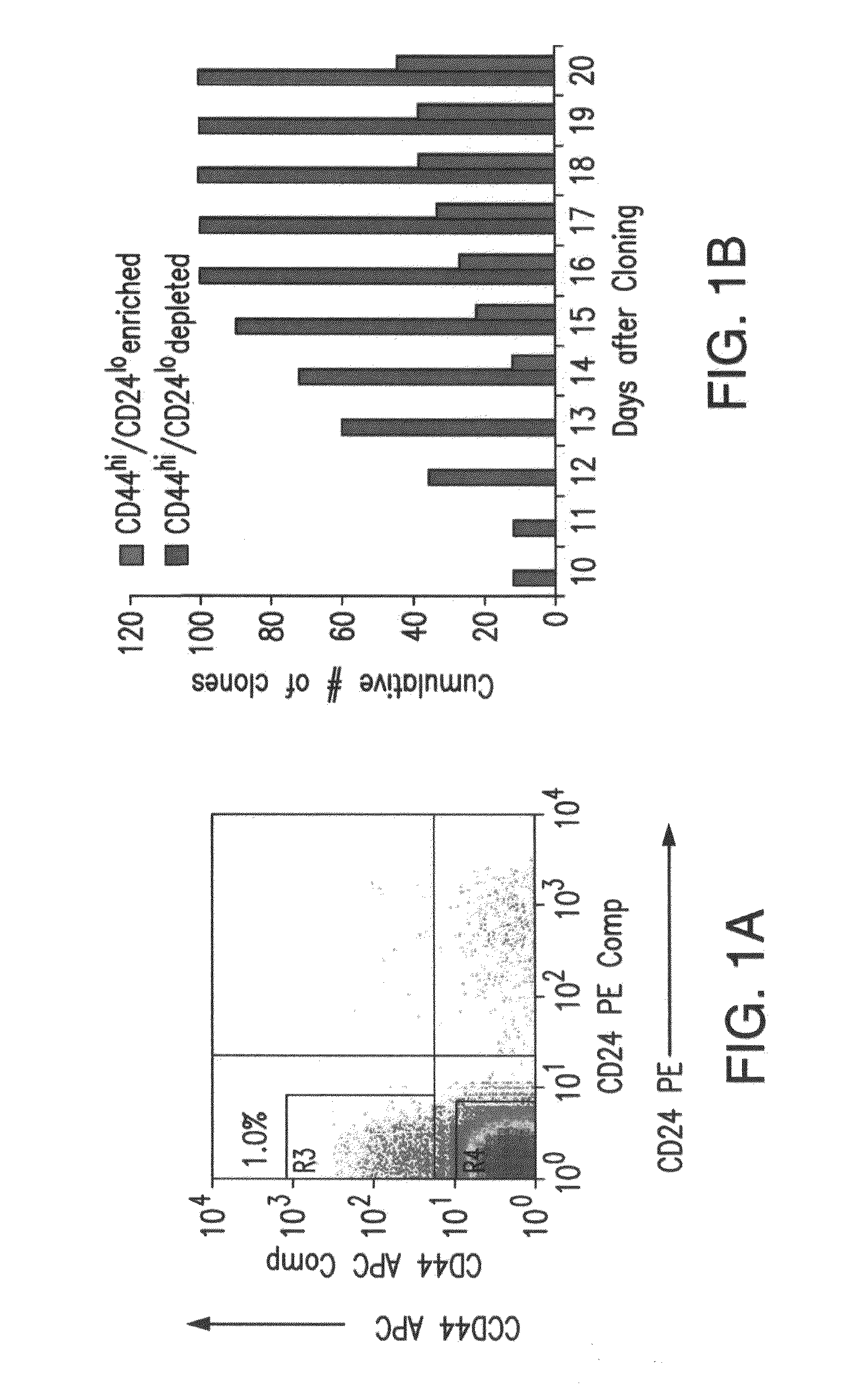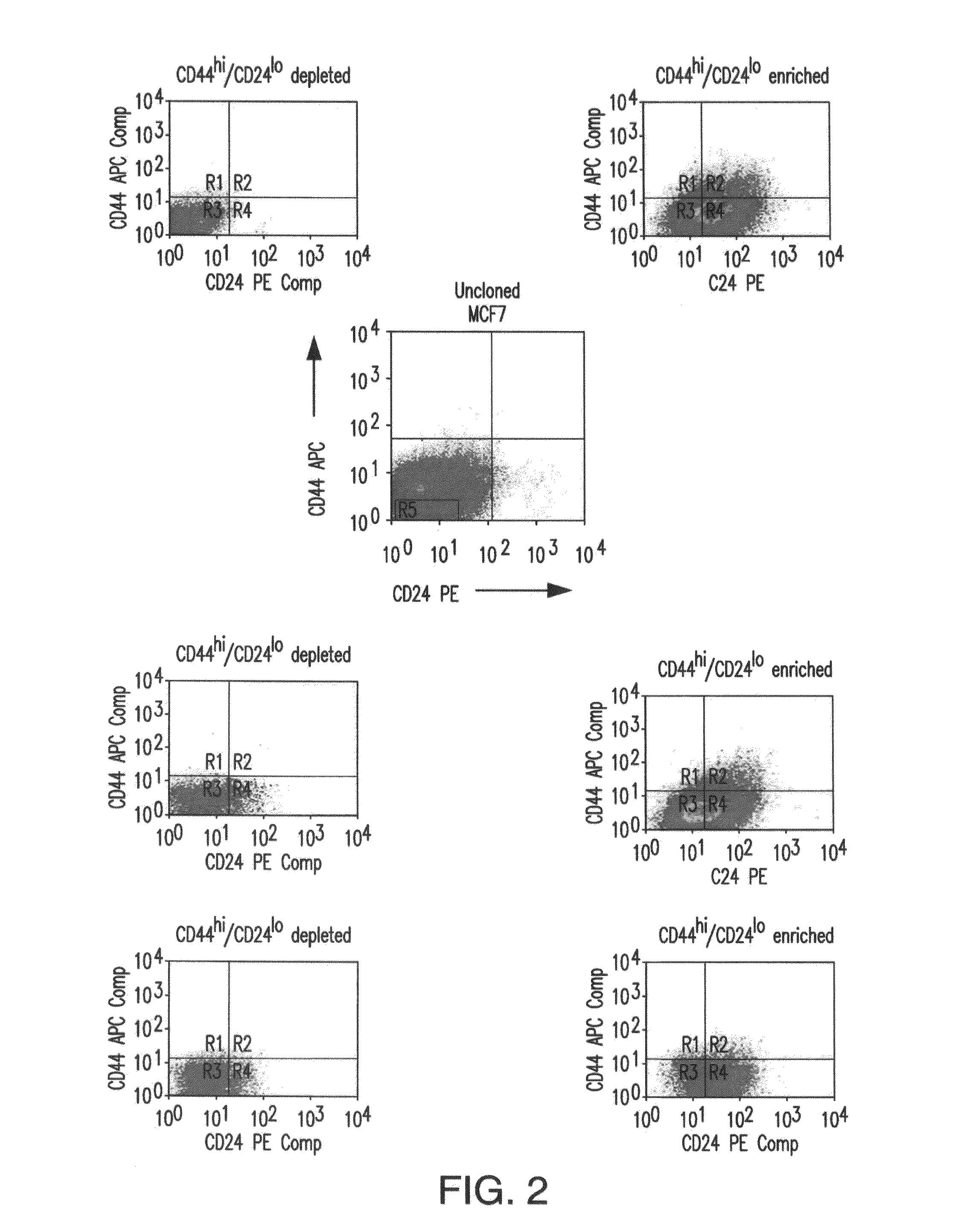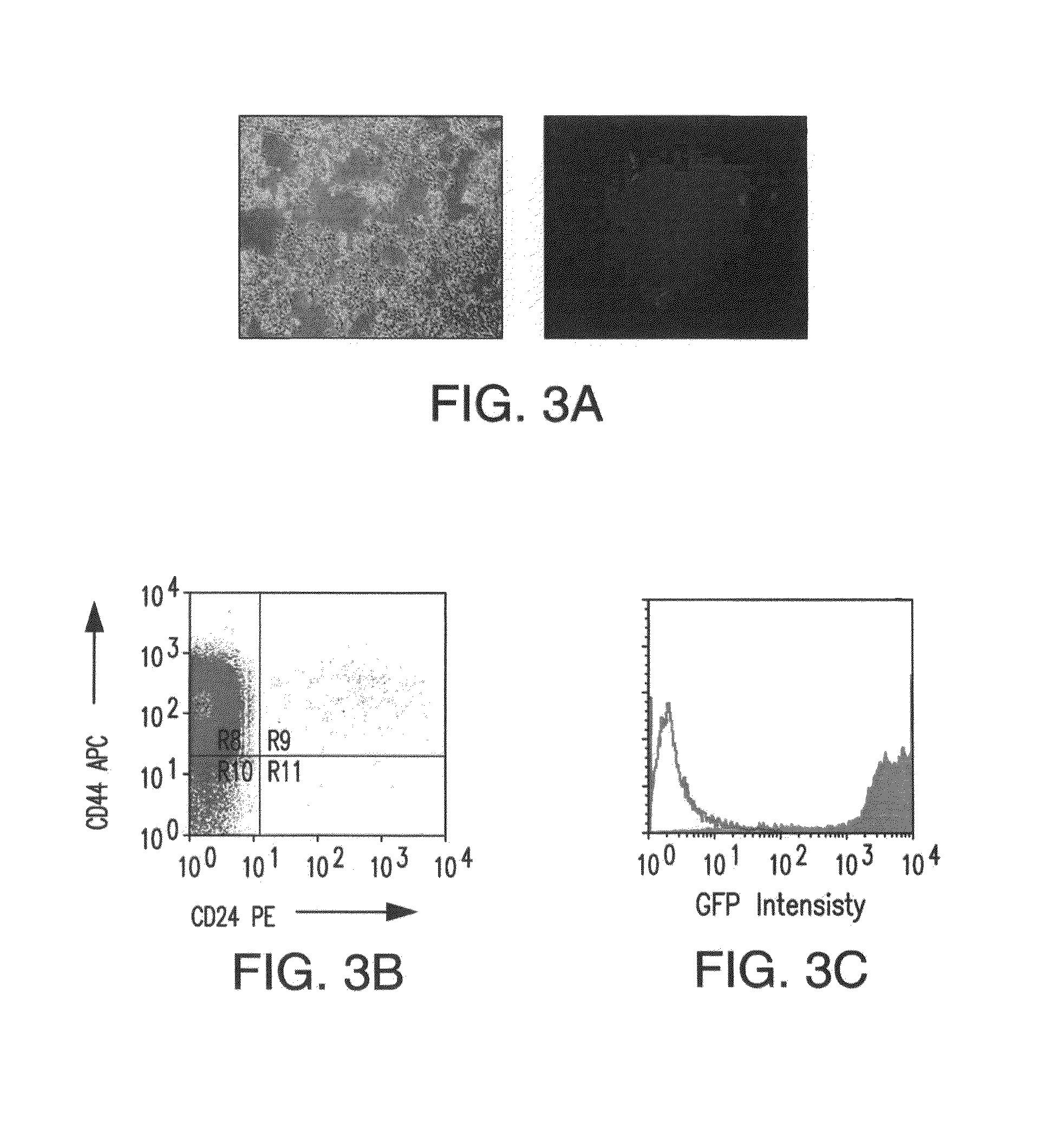Cancer stem cell immortalization
a stem cell and cancer technology, applied in the field of cancer stem cell immortalization, can solve the problems of insufficient cscs, inability to produce sufficient cscs via cell culture, and substantial tumor shrinkag
- Summary
- Abstract
- Description
- Claims
- Application Information
AI Technical Summary
Benefits of technology
Problems solved by technology
Method used
Image
Examples
working example 1
6. WORKING EXAMPLE 1
[0134]1. Breast cancer stem cells have a lower cloning efficiency and arise more slowly than TACs. MCF7 breast cancer cells were assessed for CD44 and CD24 expression, which can be used to identify and isolate CSCs (1). As shown in FIG. 1A, CD44hi / CD24lo cells comprised ca. 1% of the entire population, in keeping with previous observations in both MCF7 cells and primary cancers (1,46). These cells were then sorted into 96 well plates and expanded as single cell clones. The remainder of the population, consisting of the bulk of the cells, and comprised almost exclusively of TACs, was similarly sorted into a separate set of 96 well plates. All plates were examined daily and the point at which macroscopically visible colonies first became detectable was noted. As seen in FIG. 1B, the TAC population showed a cloning efficiency of 34%; clones were first detected 10 days after plating, and no additional clones were detected beyond day 16. In contrast, CSCs cloned less ...
working example 2
7. WORKING EXAMPLE 2
[0142]A highly sensitive assay for compounds with selectivity for CSCs. The identification of compounds that selectively target Oct3 / 4-GFP+MCF7 cells demands a screening strategy that is simple, sensitive, rapid, and reproducible. Ideally, it should also be internally controlled to allow for the detection of what might initially be only small differences between the two cell populations. To this end, control MCF7 cells were tagged with the red fluorescent protein DsRED (Clontech). It was shown that the overall fluorescence intensity of this population as well as that of the Oct3 / 4-GFP+MCF7 CSCs varies in direct proportion to the number of initially plated cells. Further, GFP and DsRED fluorescence were simultaneously measured at non-overlapping emission / excitation wavelengths, and fractional changes of the two populations were reproducibly measured (FIG. 7). Such a labeled population may be used to identify compounds selectively inhibitory to Oct3 / 4-GFP+MCF7 cell...
working example 3
8. WORKING EXAMPLE 3
[0143]Experiments were performed to determine whether the growth of Oct3 / 4-GFP(+) MCF cells could be inhibited with novel small molecules. Oct3 / 4-GFP(+) MCF7 cells were used as the target population. Control cells consisted of Oct3 / 4-GFP(−)MCF cells (lacking an Oct3 / 4-GFP cassette) that were infected with a GFP-expressing lentivirus as a way of controlling for GFP expression. Initial screenings were performed in 384 well plates on triplicate samples as follows.
[0144]First, the cell cultures were prepared by trypsinizing and resuspending the cells in MCF7 culture medium (alpha MEM, 10% FBS, 2 mM Glutamine, 1 mM Sodium Pyruvate, 1 mM non-essential amino acids, 100 U / ml Penicillin / Streptomycin) at a density of 4×104 / ml. The screen was then performed by (1) diluting compounds to 30 μM using alpha MEM; (2) adding 5 p. 1 of compound-containing solution to each well (which will result in a final concentration of 5 μM); (3) adding 25 μl of cell suspension to each well (1...
PUM
| Property | Measurement | Unit |
|---|---|---|
| molecular weight | aaaaa | aaaaa |
| wavelength | aaaaa | aaaaa |
| wavelength | aaaaa | aaaaa |
Abstract
Description
Claims
Application Information
 Login to View More
Login to View More - R&D
- Intellectual Property
- Life Sciences
- Materials
- Tech Scout
- Unparalleled Data Quality
- Higher Quality Content
- 60% Fewer Hallucinations
Browse by: Latest US Patents, China's latest patents, Technical Efficacy Thesaurus, Application Domain, Technology Topic, Popular Technical Reports.
© 2025 PatSnap. All rights reserved.Legal|Privacy policy|Modern Slavery Act Transparency Statement|Sitemap|About US| Contact US: help@patsnap.com



